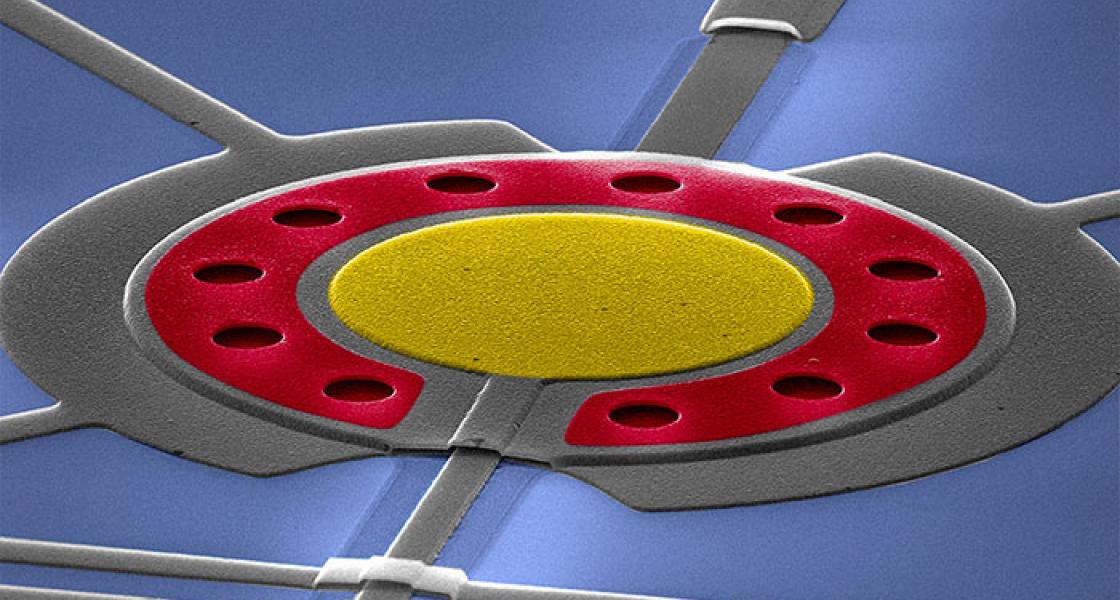In the future, quantum microwave networks may handle quantum information transfer via optical fibers or microwave cables. The evolution of a quantum microwave network will rely on innovative microwave circuits currently being developed and characterized by the Lehnert group. Applications for this innovative technology could one day include quantum computing, converters that transform microwave signals to optical light while preserving any encoded quantum information, and advanced quantum electronics devices.
In recent work, the group demonstrated that a flexible aluminum drumhead embedded in a microwave circuit made it possible for researchers to manipulate the timing and shape of microwave signals while preserving their quantum nature. The oscillating drumhead (yellow in the picture) is actually part of the microwave circuit’s capacitor, whose two charge-conducting surfaces are just 40 nm apart.
The capacitor’s job is to accumulate and hold electrical charge. The dc electrode (red in the picture) allows the researchers to adjust the capacitor, which in turn allows them to change the circuit’s resonant frequency, making it possible to connect the circuit to other microwave quantum devices.
The drumhead’s job is to encode the quantum information in the microwave signal as mechanical motion and store the quantum information intact until the drumhead’s mechanical motion can be reconverted back into microwave radiation. After reconversion, the researchers verified that the quantum information had indeed come through in good shape.
“We’ve learned how to manipulate the information in a microwave signal in a unique way” explains graduate student Adam Reed. “We do this by taking the energy in a propagating electrical signal and transferring it into a drum that’s vibrating at megahertz frequencies even though our electrical signal is vibrating at gigahertz frequencies.”
Reed’s collaborators on this amazing project included former research associate Reed Andrews, Fellow Konrad Lehnert as well as Katarina Cicak and John Teufel of NIST Boulder’s Advanced Microwave Photonics group. Their work was published online on November 30, 2015, in Nature Communications.
The researchers believe their drumhead-containing capacitor and its microwave circuit hold great promise for the future of quantum electronics. The device may allow engineers to build quantum microwave networks from separate and even mismatched components that can be synchronized via the transfer of quantum information in and out of the drumhead. The device could one day make it possible to prepare quantum states of motion in an object large enough to visible to the naked eye. This process would rely on capturing quantum microwave signals prepared by artificial atoms or superconducting qubits, which are the fundamental units of information in a quantum computer. ––Julie Phillips




